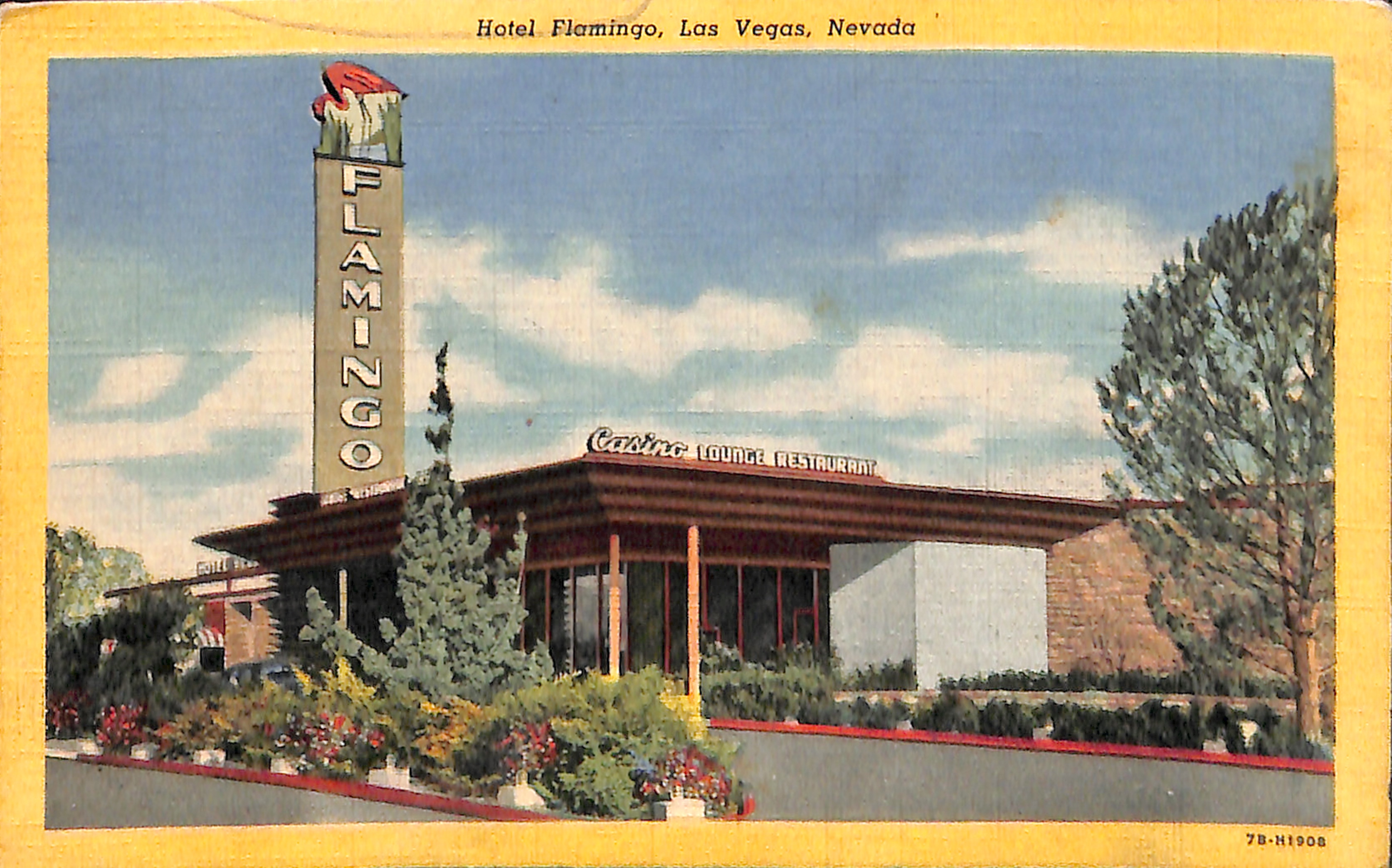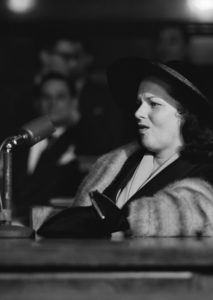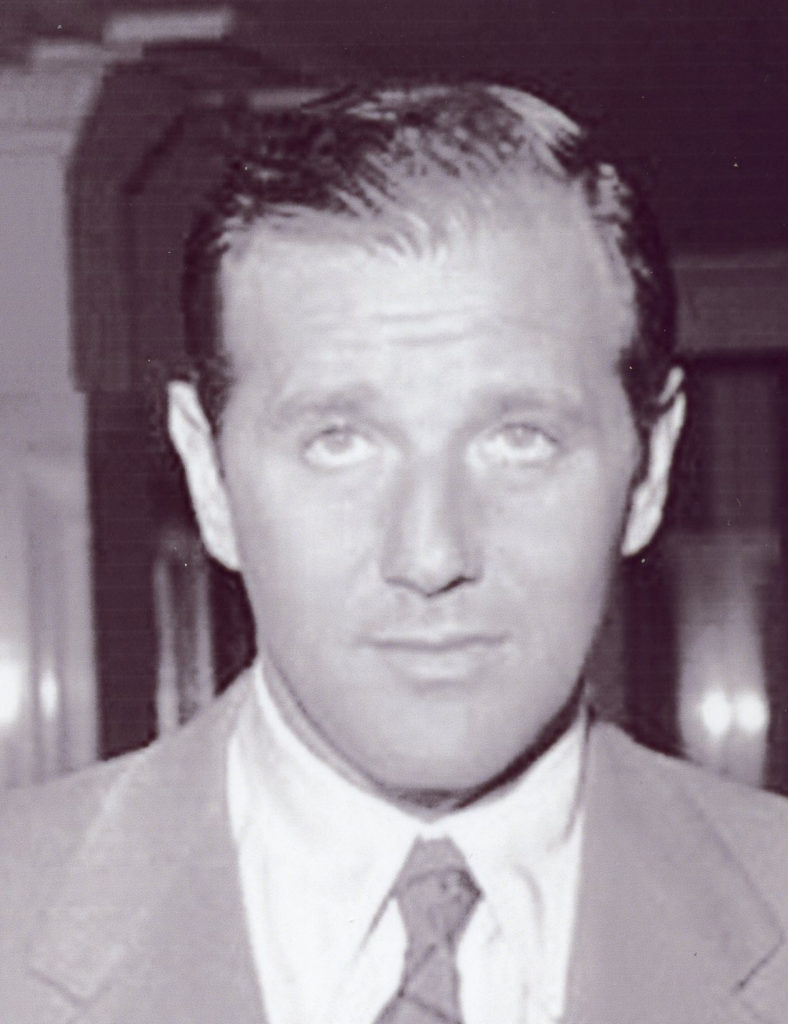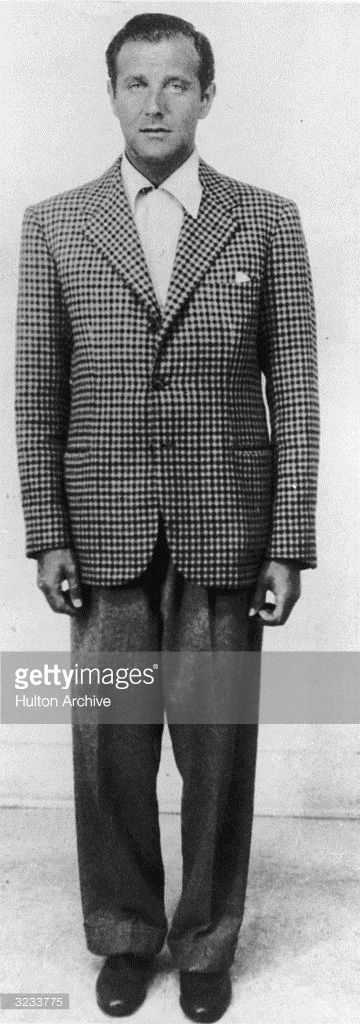I Died Again to a Mob I Just Kiled

The Flamingo Hotel in the late 1940s.
To this day no one knows who killed Benjamin "Bugsy" Siegel.
The shooting in Southern California happened on June, 20, 1947, six months after Siegel'southward mobbed-up Flamingo hotel-casino on the Las Vegas Strip opened disastrously during a rare winter rainstorm. The resort, congenital on the road to Los Angeles, closed in early on 1947 but was back in business by springtime every bit the Fabled Flamingo. It is notwithstanding in operation at the same site, though the original construction has been replaced past a modern hotel-casino, still called the Flamingo.
Siegel's bloody death at his girlfriend Virginia Colina's rented dwelling in Beverly Hills that June night remains a popular Mob mystery. Every twelvemonth equally the anniversary of his expiry approaches, speculation over who killed the 41-yr-old Brooklyn-born mobster seems to intensify, centering on several theories.

While the fence continues over who pulled the trigger, one thing is certain: The death scene 71 years agone was gruesome.
Authors Ed Reid and Ovid Demaris, in their 1963 true crime volume The Dark-green Felt Jungle, about Mob influence and political corruption in Las Vegas, described what happened that night in Beverly Hills. Other writers have filled in the picture with additional details.
At ten:45 p.m., a sniper armed with a .30-caliber armed forces carbine rested the butt on the crossbar of a rose-covered pagoda's latticework outside so fired nine steel-jacketed slugs through a window into the living room of the pinkish Moorish mansion at 810 N. Linden Drive.
Siegel, reading a copy of the Los Angeles Times he had picked upwardly at a restaurant earlier, was shot four times, twice in the head and twice in the torso while seated on a chintz-covered sofa, a table lamp illuminating his head. The drapes were open. One caput shot propelled an eye 15 feet away onto the tiled dining room flooring.
Of the five shots that missed, one destroyed a marble statue of Bacchus on a thou piano and another punctured a painting of a nude belongings a wineglass.
Siegel's close friend and Hollywood business acquaintance Allen Smiley, an investor in the Flamingo, was seated on the sofa with Siegel but hit the floor afterward the shooting started. Smiley's jacket was ripped past gunfire.
At the time, Virginia Hill was not home. A calendar week before, after an argument with Siegel, she had left for Paris.
So who did this? And why?
More than than a few people are satisfied with the premise put along in the 1991 film Bugsy, starring Warren Beatty every bit Siegel and Annette Bening as the tempestuous Virginia Hill, who, in existent life, was a rough-around-the-edges extravagant spender originally from a minor central Alabama town near Birmingham.
(To those who knew Siegel, he was merely Ben, never "Bugsy." According to former Las Vegas casino executive Pecker Friedman in his 2022 book thirty Illegal Years to the Strip, "Bugsy" plainly was a childhood nickname reflecting something crazy Siegel said to other kids, that newspapers afterward picked upwards on.)
In the movie, based on the 1967 book We Only Kill Each Other past Dean Jennings, Mob leaders coming together in Havana, Republic of cuba, including Siegel's adolescence friend, racketeer Meyer Lansky, angrily discuss the cost overruns during construction of the Flamingo. Later on all, it was their money that Siegel was wasting. Some voice suspicion that Virginia Hill was stealing cash from the project.
According to the movie, Lansky (played by Ben Kingsley) phoned Siegel at the Flamingo during the disappointing rain-drenched opening, telling him to report to Los Angeles for a meeting with "Gus and Moe," presumably underworld figures Gus Greenbaum and Moe Sedway. Subsequently, at Colina's abode, Siegel is shot more than than a dozen times by an unseen assailant firing from outside the residence.
The actual killing was in June, of course, not immediately afterwards the December 26, 1946, m opening every bit the movie portrays information technology, but the implication that the shooting was a Mob-ordered hit has gained traction in more places than just the big screen version of events. Those who support that theory don't dubiety who ordered information technology, they just aren't certain who might have pulled the trigger, though many bespeak to a couple of suspects, including New York killer John "Frankie" Carbo.
A 2008 story virtually Siegel in the Las Vegas Lord's day, for instance, notes that Carbo and another striking man, Frankie Carranzo, have been mentioned every bit Siegel's "likely" killers.
Others besides betoken the finger at Carbo.
According to New York announcer and author Larry McShane, even onetime Philadelphia Mafia dominate Ralph Natale, later a Mob turncoat, believes the Siegel striking was carried out by Carbo and was set by Lansky, Siegel's babyhood friend.

West Declension striking man Jimmy "The Weasel" Fratianno, who temporarily served as head of the Los Angeles crime family before becoming a government witness, supported the Carbo theory. Fratianno's telling of it is laid out in a 1980 book about his criminal life, The Last Mafioso, by Ovid Demaris, i of the authors of The Greenish Felt Jungle.
In the book, Fratianno claims that Fifty.A. Mafia dominate Jack Dragna told him Carbo did the killing on Lansky's orders.
The motive: Siegel was a dreamer who had been dreaming with "important" people's money in constructing the Flamingo. Messing with someone else's money is the "fastest manner to go clipped," Dragna told Fratianno, according to the volume.
One who disagrees with the Mob striking theory is Bernie Sindler, an emissary of Lansky's in Las Vegas during that era.
In a 2022 interview at The Mob Museum with author Geoff Schumacher, the museum's senior director of content, Sindler, now in his 90s, said killing Siegel would have required permission from Charles "Lucky" Luciano, "who was the head of everything." Luciano would not take given permission considering Lansky, who was close to Luciano, would not accept allowed the killing to happen, Sindler said in the interview.
According to Sindler, that made Siegel "untouchable."

The declared financial motive for wanting Siegel killed was not a factor, Sindler indicated in the interview. Lansky paid back any Flamingo investor who wanted out, and by May 1947, later the hotel-casino had reopened, it raked in $10 million in four weeks, Sindler said.
Moreover, the method used to kill Siegel was out of sync with the Mob way of doing things. Firing a weapon from outside a house increases the run a risk of missing, Sindler said. That is not how Mob hit men carried out their deadly assignments. The preferred method was a shot to the back of the caput by a killer seated backside the victim in a car. That sort of killing reduces the take chances of missing.
The shooter, Sindler contended, was one of Virginia Loma'south brothers, a U.S. Marine named either Bob or Bill — he couldn't remember which. The Marine blood brother was stationed at Army camp Pendleton near Oceanside, California.
Almost two weeks before the Flamingo opened in late 1946, simply subsequently the end of World State of war 2, Sindler saw Virginia Hill and her war machine brother in forepart of the Flamingo, arguing nearly Siegel beating her upwardly. Siegel and Hill had a love-hate relationship, Sindler said, adding that Siegel'south beatings left her with bruises.
Standing in front of the Flamingo, Sindler heard Virginia Hill's brother say he was going to kill Siegel. Sindler's response: "You lot shouldn't talk that way effectually here because if people hear this, they are going to take it the wrong way."
Months later, afterward the Flamingo reopened, Virginia Hill moved to Europe, and Siegel was gunned down, Sindler noted. One of her brothers, Chick Hill, had been at the business firm in Beverly Hills when Siegel was killed.
In 1966, Virginia Hill died of an overdose of sleeping pills in Austria. She was 49.
Meanwhile, the quest for an answer to the Siegel murder continues.
Some suspect his decease was the result of a feud over command of the race wire in the Westward. Others believe Chicago or Detroit operatives might have orchestrated the hit.
No 1 was ever charged in the killing.
Until the cease of his life, Siegel'due south friend Allen Smiley knew that people would want to know who did the shooting.
In her 2022 memoir Cradle of Crime: A Daughter's Tribute, Luellen Smiley, Allen Smiley's daughter, recalls asking her dad virtually the Siegel killing. This was toward the end of Allen Smiley'south life in the early 1980s while he was at Cedars-Sinai Infirmary in Los Angeles with a failing liver.
She asked her dad, "Did you ever find out who …"
"The answer is no," Allen Smiley said, adding that later he was gone people would ask her that question.
His assessment was authentic. With the June ceremony of the shooting once again budgeted, people are notwithstanding asking non only of Luellen Smiley, merely in full general, "Who killed Ben Siegel?"
The answer: No i knows for sure.
Larry Henry is a veteran print and broadcast announcer. He served as press secretary for Nevada Governor Bob Miller, and was political editor at the Las Vegas Sun and managing editor at KFSM-TV, the CBS affiliate in Northwest Arkansas. Henry taught journalism at Haas Hall Academy in Bentonville, Arkansas, and now is the headmaster at the school's campus in Rogers, Arkansas. The Mob in Pop Culture blog appears monthly.
Source: https://themobmuseum.org/blog/killed-benjamin-bugsy-siegel/
0 Response to "I Died Again to a Mob I Just Kiled"
Postar um comentário